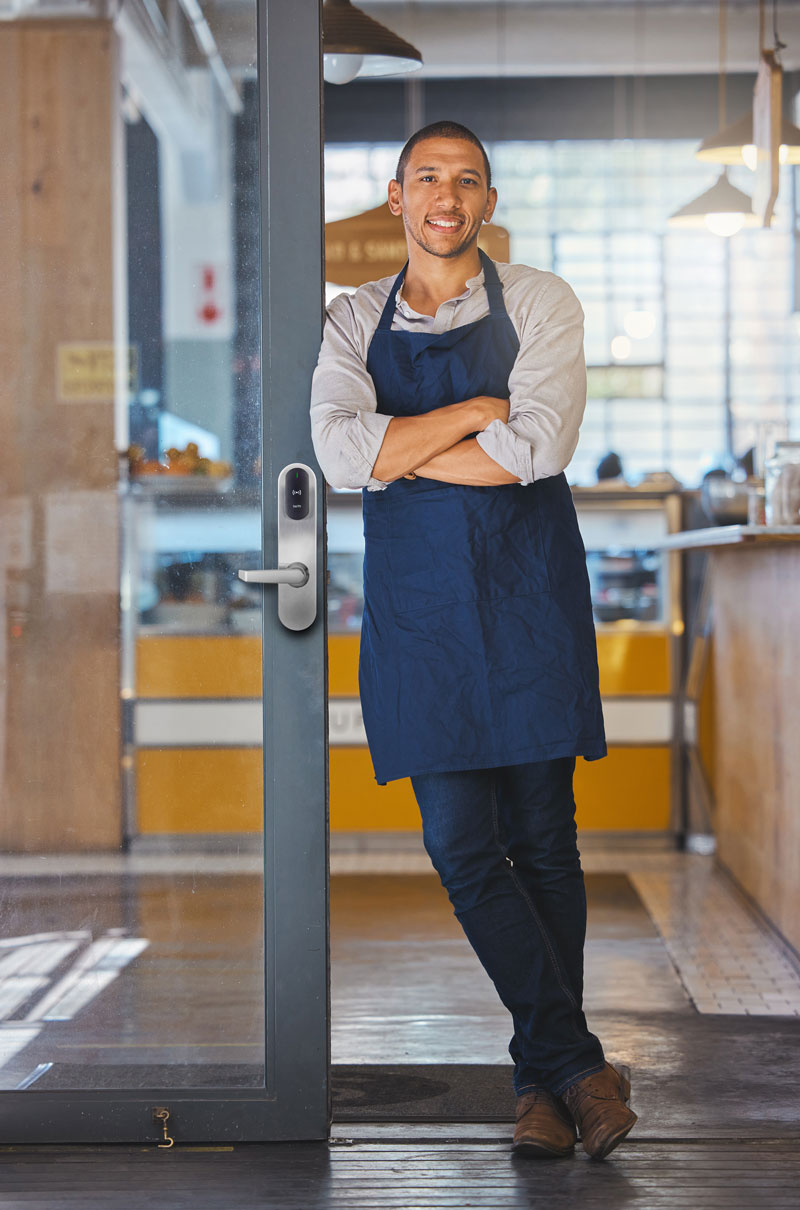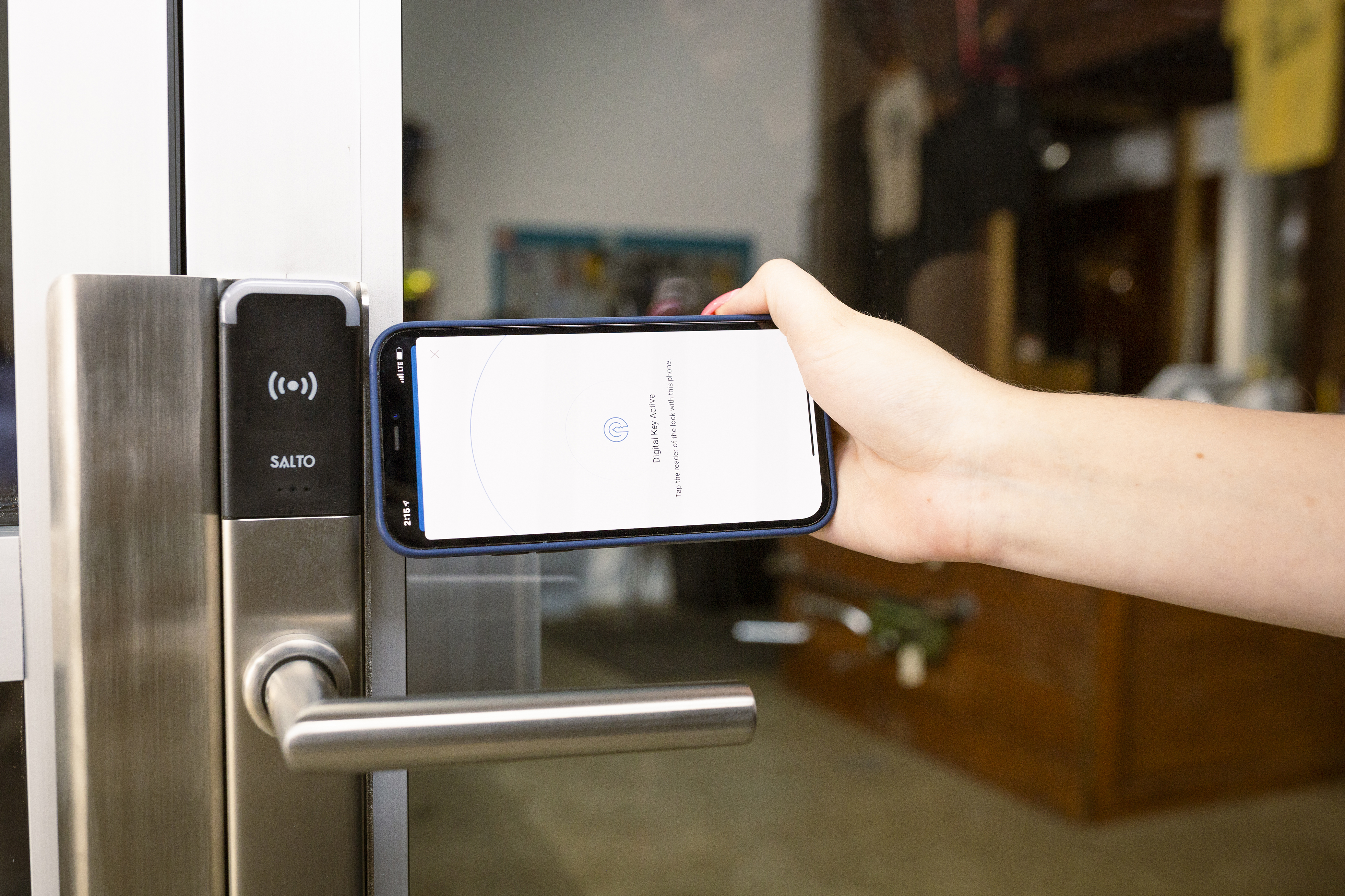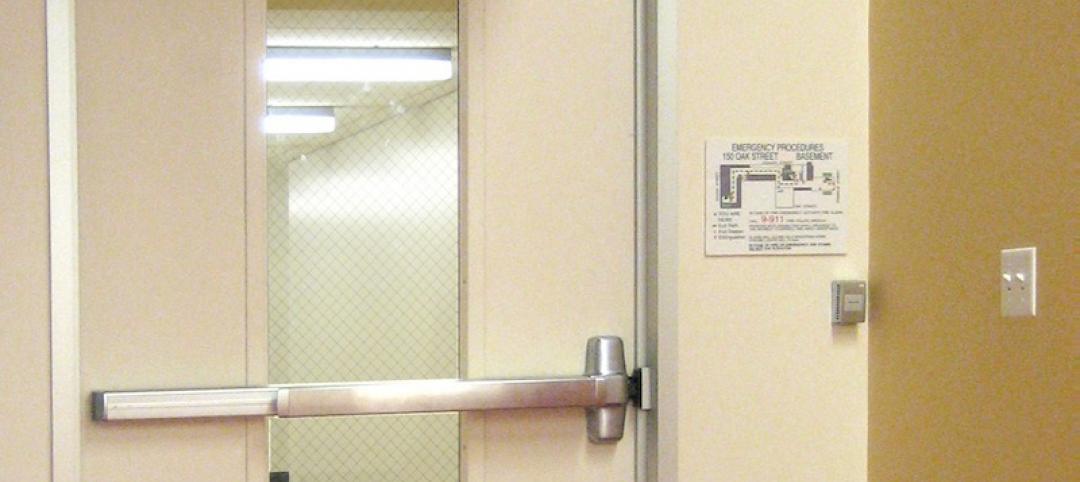Most people have probably heard of software-as-a-service (SaaS) by now, but what about keys-as-a-service (KS)? This new technology is a game-changer for retail businesses.
KS is a cloud-based control system that allows users to manage access to any locked area door, exterior door, cabinet, locker — anything that requires monitored security. This has proven highly useful in retail establishments like restaurants, which can have multiple locations and tend to experience frequent changes in personnel. In these situations, traditional lock-and-key systems can not only be difficult and expensive to manage; issuing and retrieving keys can pose serious security issues.
How KS Works
KS wireless smart locks can be managed by any device with an internet connection, including a computer, tablet or phone. Because the locks can be monitored and controlled via the cloud, a single individual can manage multiple retail locations, tracking who goes where and when. When necessary, the manager can also lock and unlock doors remotely.
Digital keys can be programmed from anywhere in the world, enabling managers to quickly grant or deny access to users for one or more locations. Each user may receive a physical key fob that can be programmed from afar. Salto Systems’ waterproof key fobs, for example, do not need batteries and are instead powered by the door locks themselves. Users may also gain access through their phones, Android wearables, Apple watches and keycards.
If a particular user should no longer have access to any or all locks, that can also be remotely deactivated or reprogrammed by the manager at a moment’s notice. This prevents the need to recover physical keys — or having to rekey doors if that proves to be impossible.
 Beyond Security
Beyond Security
“Wireless access control systems offer a variety of advantages in addition to security,” notes John Wright, Salto Systems Retail & Fitness Industry Business Leader. For example, there are definite financial benefits to KS implementation. Among these, Wright cites scalability, efficiency, ease of integration and reduced maintenance.
He explains, “I helped a well-known chain of restaurants implement a wireless control system to streamline delivery of wholesale food supplies. We gave their supplier partners the ability to gain controlled entry to the business in off-hours, which was a win-win for everyone.”
By enabling the restaurant to flexibly control deliveries for fresh ingredients at the most convenient and cost-effective times, “final mile” delivery costs — the last phase of the logistics process which can be the most difficult and expensive of all — were reduced. (Part of the extra cost of that last leg of the process is usually passed on to the restaurant.) This also allowed suppliers to make their deliveries without having to carefully coordinate with restaurant staff, saving everyone time and money.
Security was not an issue. Wright says, “Our system allowed the restaurant to generate mobile credentials for each supplier. These could be used during specified delivery windows, ensuring suppliers could access the restaurant’s storage facilities in off hours, while the restaurant’s management had a full audit trail of who entered the premises and when the delivery was completed.”
Ease of Use
While ideal for new retail construction, KS technology also can be easily implemented during renovation projects. The process of moving from traditional locks to keys-as-a-service in existing retail spaces is designed to minimize disruption to daily operations. Wright explains, “Switching to a Salto wireless access control system from traditional door locks involves an initial consultation, design, installation and a system setup, and then training.” For existing small- to medium-sized retail spaces, this entire transition can be completed in a just a few weeks.
That’s because Salto’s approach is designed to bypass the expensive and time-consuming infrastructure most access control systems require, he adds. The locks themselves can be installed on either interior or exterior doors and do not need servers, software installation or wiring to function because they are battery-operated and managed entirely in the cloud.
The company’s success stories extend to every sector of the retail industry, providing versatile solutions designed for all types of buildings and facilities, and securing virtually any conceivable door, opening or access point. “The flexibility and scalability of the system make it suitable for retail properties of all sizes, from a single store to a network of hundreds of global locations,” notes Wright.
Related Stories
Seismic Design | Jun 9, 2015
First building-specific earthquake warning system installed in North Portland, Ore.
The ShakeAlarm system recognizes and quantifies the faster but lower-energy seismic P-wave, which is the precursor to the more damaging S-wave.
University Buildings | Feb 20, 2015
Penn strengthens campus security by reviving its surrounding neighborhood
In 1996, the University of Pennsylvania’s sprawling campus in Philadelphia was in the grip of an unprecedented crime wave. But instead of walling themselves off from their surrounding neighborhoods, the school decided to support the community.
Sponsored | | Aug 8, 2014
Safe and secure: Fire and security glazing solution for Plaquemines Parish Detention Center
When the designers at L. R. Kimball looked for an all-in-one clear, wire-free glazing solution that protects against fire, bullets and forced entry for the new Plaquemines Parish Detention Center, SAFTI FIRST supplied a complete single-source tested and listed assembly that was easy to install and maintenance-free.
| May 15, 2014
'Virtually indestructible': Utah architect applies thin-shell dome concept for safer schools
At $94 a square foot and "virtually indestructible," some school districts in Utah are opting to build concrete dome schools in lieu of traditional structures.
| May 5, 2014
Tragic wired glass injury makes headlines yet again
In the story, a high school student pushed open a hallway door glazed with wired glass. His arm not only broke the glass, but penetrated it, causing severe injuries. SPONSORED CONTENT
Sponsored | | Apr 23, 2014
Ridgewood High satisfies privacy, daylight and code requirements with fire rated glass
For a recent renovation of a stairwell and exit corridors at Ridgewood High School in Norridge, Ill., the design team specified SuperLite II-XL 60 in GPX Framing for its optical clarity, storefront-like appearance, and high STC ratings.
| Jan 13, 2014
AEC professionals weigh in on school security
An exclusive survey reveals that Building Teams are doing their part to make the nation’s schools safer in the aftermath of the Sandy Hook tragedy.
| Jan 10, 2014
What the states should do to prevent more school shootings
To tell the truth, I didn’t want to write about the terrible events of December 14, 2012, when 20 children and six adults were gunned down at Sandy Hook Elementary School in Newtown, Conn. I figured other media would provide ample coverage, and anything we did would look cheap or inappropriate. But two things turned me around.
| Jan 10, 2014
Special Report: K-12 school security in the wake of Sandy Hook
BD+C's exclusive five-part report on K-12 school security offers proven design advice, technology recommendations, and thoughtful commentary on how Building Teams can help school districts prevent, or at least mitigate, a Sandy Hook on their turf.
| Jan 9, 2014
16 recommendations on security technology to take to your K-12 clients
From facial recognition cameras to IP-based door hardware, here are key technology-related considerations you should discuss with your school district clients.















